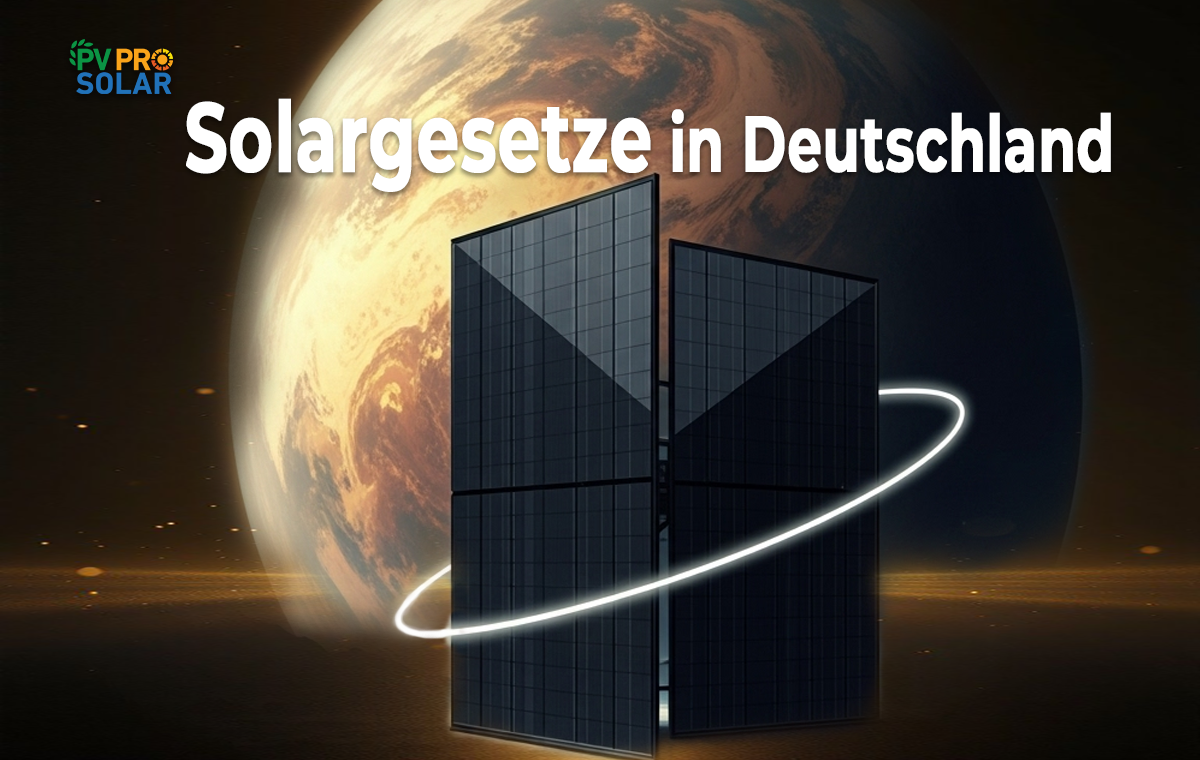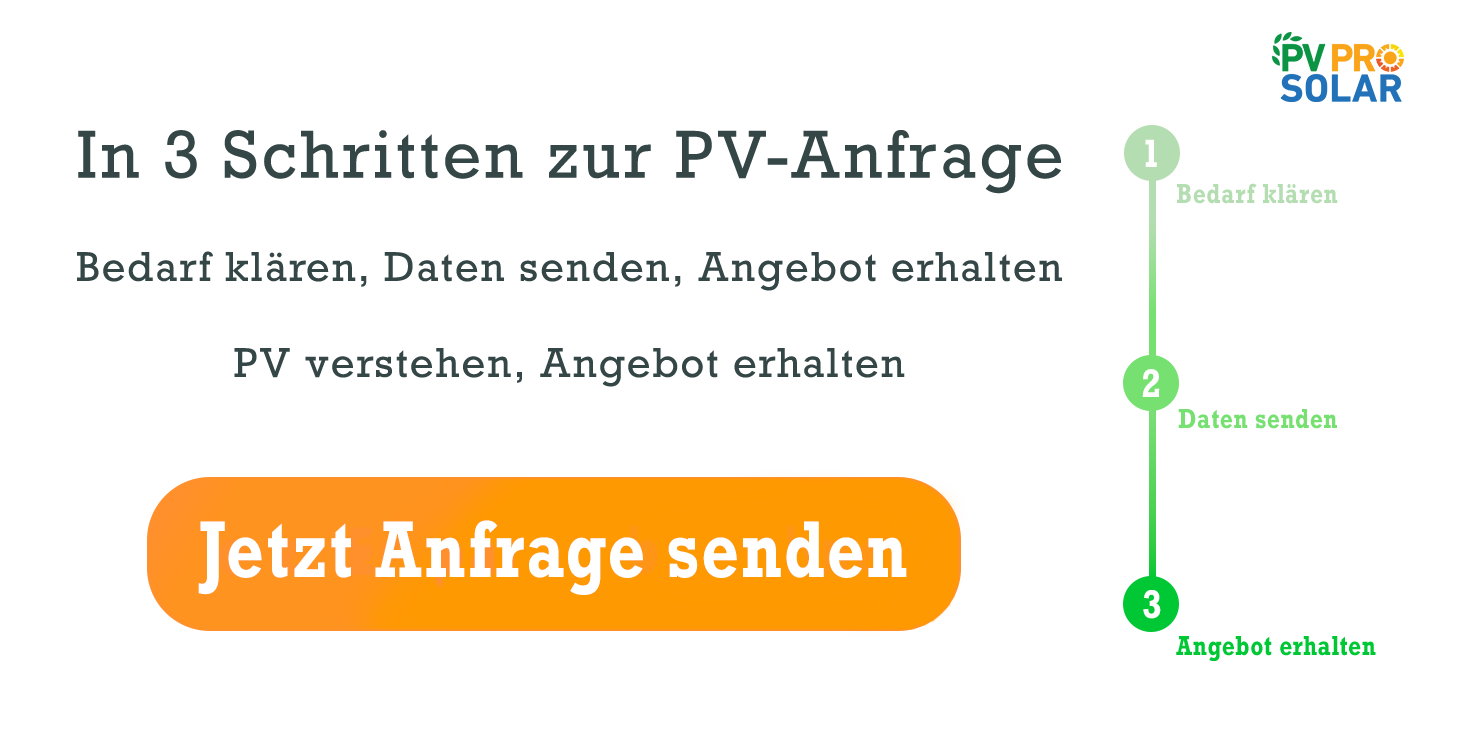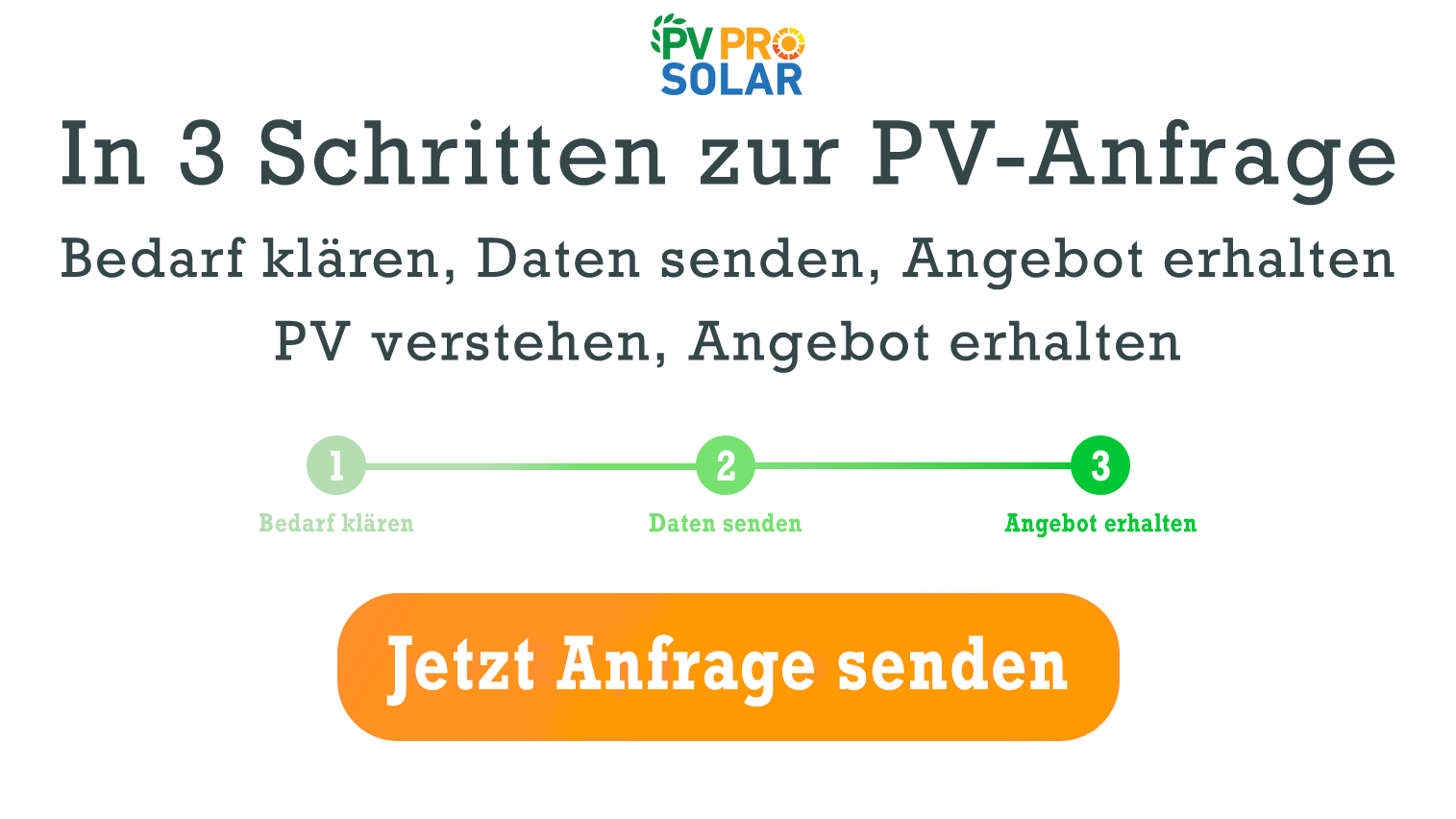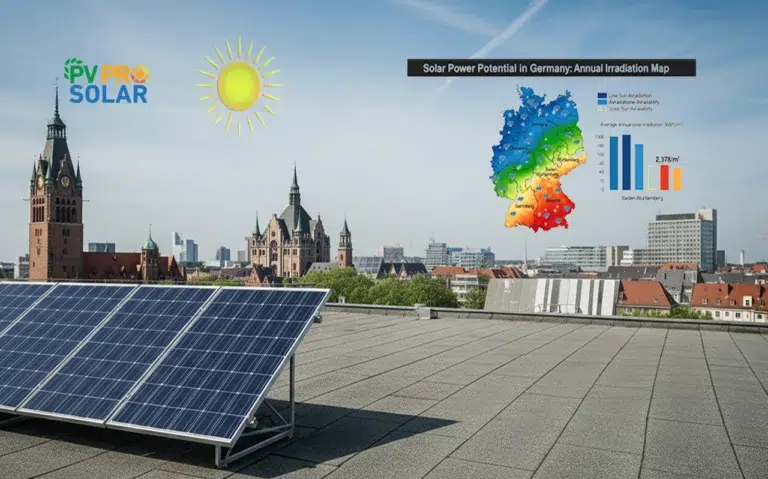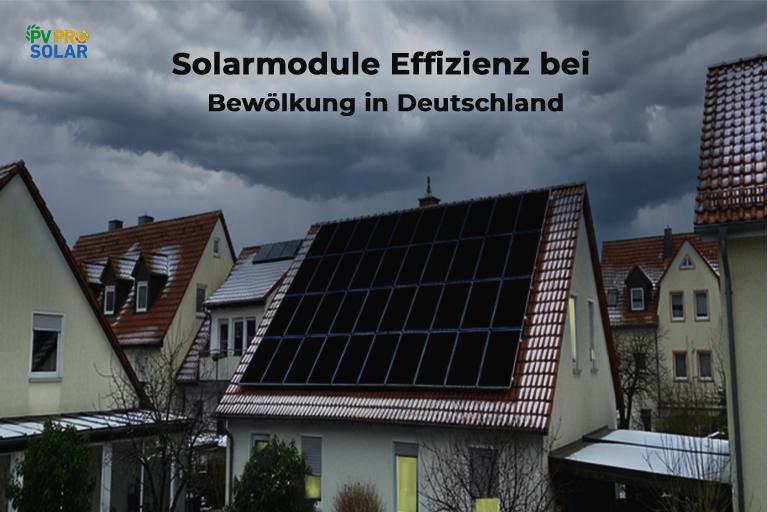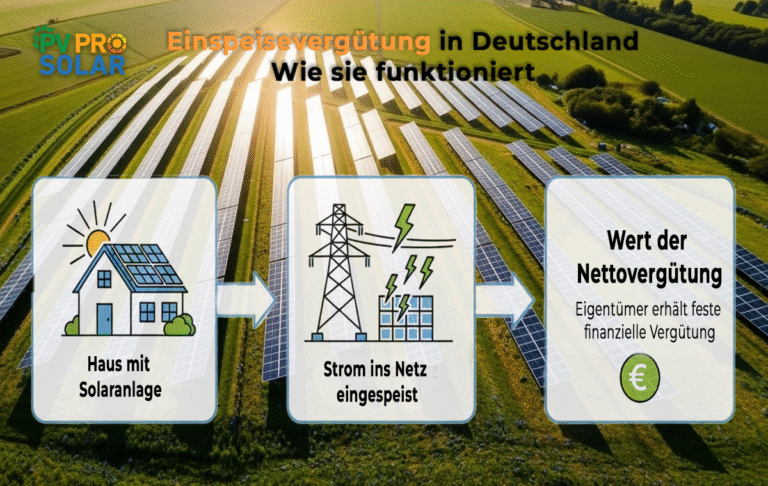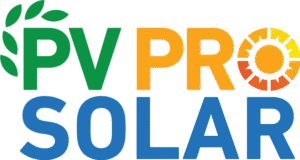Solar Energy Laws in Germany Explained
The use of solar energy in Germany is growing steadily. Photovoltaics play a central role in the energy transition, reducing CO₂ emissions, lowering energy costs, and increasing independence from the electricity grid. At the same time, the legal framework is complex and constantly evolving. New solar energy laws, obligations for new buildings and roof renovations, as well as changes to feed-in tariffs, directly affect homeowners, businesses, and investors. This comprehensive guide explains the most important laws, their implementation, and their impact to help you make informed decisions about your solar system.
What Are the Key Solar Energy Laws in Germany?
Germany has several legal regulations for photovoltaic systems. These laws determine how solar power is generated, stored, fed into the grid, and incentivized. Failure to stay informed can result in financial losses or penalties.
Central Regulations Include
- Renewable Energy Sources Act (EEG): Regulates feed-in tariffs and support mechanisms.
- Solar Peak Act (Solarspitzengesetz): Mandates the use of smart metering systems and adjusts feed-in tariffs.
- Solar Obligations by Federal State: Requirements for PV installations on new buildings or roof renovations.
- Support Programs and Tax Incentives: KfW loans, grants, depreciation options, and regional programs.
What Does the Renewable Energy Sources Act (EEG) Regulate?
The EEG is the central law for renewable energy in Germany, guaranteeing long-term revenues for investors and system operators through fixed feed-in tariffs.
Objectives
- Promote the use of renewable energy and reduce fossil fuels.
Tariffs
- 20 years of guaranteed feed-in tariff.
- Amount depends on system size, commissioning date, and type of use (self-consumption or full feed-in).
Current Changes 2023/24
- Bonuses for self-consumption
- Degression of feed-in tariffs
- Adjustments for small rooftop systems (<10 kWp)
Practical Example
- A single-family home with a 10 kWp PV system produces about 9,000 kWh per year.
- At a feed-in tariff of €0.08/kWh, annual revenue is €720.
- By consuming 50% of the electricity themselves, the household saves an additional €1,350 in electricity costs.
Impact on Businesses
- Companies benefit particularly from the EEG because they can reduce electricity costs and improve CO₂ balances.
- Medium-sized companies with 50 kWp PV systems save up to €10,000 annually in electricity costs.
What Does the Solar Peak Act (Solarspitzengesetz) State?
Effective from February 2025, the Solar Peak Act regulates the integration of intelligent technologies and promotes efficient self-consumption.
Key Rules
- Smart Metering Systems (iMSys): Mandatory from 7 kWp. Without iMSys, feed-in is limited to 60%. Costs: €100 installation, €30 annual operation.
- Negative Electricity Prices: Feed-in tariffs are suspended during negative market prices; these periods are added to the original tariff duration.
- Self-Consumption & Storage: Focus on battery storage and smart control to maximize self-consumption and reduce grid load.
Practical Example
A company with 50 kWp PV and a 20 kWh battery can increase self-consumption from 30% to over 70%. Electricity costs are halved, and annual returns increase by 3–4%.
Technical Requirements
- Inverter compatible with iMSys
- Real-time data reporting for grid operators
- Monitoring of feed-in and self-consumption
What Solar Obligations Apply in Germany?
Solar obligations vary by state and apply to new buildings and larger roof renovations.
Examples by State
- Lower Saxony: New buildings >50 m² roof area must cover 50% with PV.
- Bremen: New buildings and roof renovations >80% of the roof area must install PV.
- Hamburg: Since 2023, new buildings must use 30% of the roof area; major roof renovations also apply.
- Berlin: New buildings >50 m² usable area must install PV; roof renovations also included.
Practical Example
A new building in Lower Saxony with 120 m² roof area must cover at least 60 m² with PV, corresponding to approximately 15 kWp installed capacity.
Nationwide Comparison
| Federal State | New Buildings Mandatory | Roof Renovation Mandatory | Minimum PV Area |
| Lower Saxony | Yes | Yes | 50% |
| Bremen | Yes | Yes | 80% |
| Hamburg | Yes | Yes | 30% |
| Berlin | Yes | Yes | 50 m² |
How Do These Laws Affect the Profitability of PV Systems?
Key Factors
- Feed-in Tariffs: May decrease due to degression and the Solar Peak Act.
- Self-Consumption: Storage systems increase profitability, amortizing costs in 8–10 years.
- Investment Costs: iMSys, storage, and planning increase upfront costs, but long-term savings exceed them.
Practical Example
Homeowner with 10 kWp PV and 10 kWh storage:
- Investment: €20,000
- Subsidy: €5,000 KfW grant
- Electricity savings + self-consumption: €2,000/year
- Amortization: ~7–8 years
Risk Analysis
- Non-compliance with iMSys: reduced feed-in revenue
- Poor planning: storage over- or undersizing
Current Incentive Programs
Available Options
- KfW Loans: Up to €50,000 for PV and storage.
- Federal State Grants: Bavaria, Lower Saxony, North Rhine-Westphalia.
- Tax Incentives: Depreciation on PV systems, corporate tax savings.
Example Calculation
Homeowner invests €25,000, receives €5,500 subsidy, and amortizes in 8 years.
Tips for Maximum Profitability
- Increase self-consumption with battery storage and smart controls
- Optimize roof areas (south-facing, tilt 30–35°)
- Check and combine subsidies
- Plan long-term for maintenance, module efficiency, and grid connection
Solar energy in Germany is heavily regulated but highly profitable if laws, incentives, and self-consumption are used correctly. EEG, Solar Peak Act, and solar obligations determine the installation, operation, and profitability of PV systems. Early information, optimal use of incentives, and professional planning allow you to reduce energy costs, cut CO₂ emissions, and achieve long-term returns.
Without iMSys, feed-in is limited to 60% of installed capacity, significantly reducing system profitability.
Exceptions are possible, for example, for heritage buildings or economic infeasibility, but require approval from authorities. What happens if I do not comply with the iMSys requirement?
Can I avoid the solar obligation?
